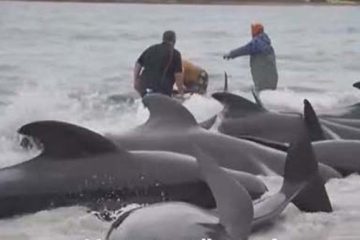 St. Petersburg, Russia: The historic International Tiger Conservation Forum ended with crucial plans to discuss further financing options for the Global Tiger Recovery Programme approved at the meeting, kick-starting new efforts to double the number of wild tigers.
St. Petersburg, Russia: The historic International Tiger Conservation Forum ended with crucial plans to discuss further financing options for the Global Tiger Recovery Programme approved at the meeting, kick-starting new efforts to double the number of wild tigers.
On the final day of the summit, delegates met briefly to hammer out key dates in the coming year to reach final agreement on how to pay for and monitor the recovery plan. This followed the endorsement on Tuesday of the Programme and a Leader’s Declaration by heads of government and tiger range countries.
“This summit has created the high level government backing that we needed to create a platform to immediately reverse the decline of wild tigers which is threatening them with extinction,” said Michael Baltzer, head of WWF’s Tigers Alive initiative. “We need governments to lead the charge forward and maintain this political enthusiasm and intensity – because the tiger cannot wait for our help.”
The 13 tiger range countries will meet during the next six months to secure more cash for the recovery plan and will finalize the long-term financing of the plan in July. They will meet again in December 2011 to monitor how well the 12-year-plan to save tigers is working.
At the summit, WWF committed to spend USD 50 million over the next five years on tiger conservation, and set a goal of increasing that to USD 85 million. The global conservation organization also released its plans to support the government’s commitments to save tigers.
Hosted by Russian Prime Minister Vladimir Putin, governments capped a year-long political process on Tuesday with about USD 127 million in new funding to support the plan, known as the Global Tiger Recovery Programme. In addition, funding will include a large loan package from the World Bank to some tiger range countries, and millions in additional grants from the Global Environment Facility.
Other heads of government attended the summit, from Bangladesh, China, Laos and Nepal.
The Global Tiger Recovery Programme was developed by countries that have tigers, which took more than a year to put together, and lays out a comprehensive set of actions to help tigers recover from decades of poaching and destruction of their forest homes.
The cost of the initial stage of the recovery programme, prepared by the tiger range countries with support from the Global Tiger Initiative of the World Bank, the Global Environment Facility and other tiger conservation partners including WWF, has been largely covered by the tiger range countries themselves, but USD 350 Million is needed from the international community.
Via: wwf.panda.org Image: Michelle Meiklejohn/FreeDigitalPhotos.net



